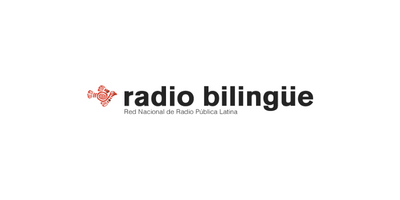Protecting Drinking Water in Agricultural Regions

Low-income communities of color in the Central Valley and Central Coast have long been disproportionately impacted by nitrates in drinking water. In the San Joaquin Valley, the largest sources of nitrate pollution are chemical fertilizer applications and manure produced at immense confined animal feeding operations throughout the region. Exposure to nitrates can cause immediate, or acute, health problems. Exposure over long periods of time can lead to many other dangerous health conditions.
For over a decade community residents and CWC, in partnership with other community-based organizations (CBOs), have advocated for improved nutrient management to prevent further nitrate pollution in groundwater relied upon for drinking water. Residents and CBOs have also advocated for interim and long-term drinking water solutions for communities impacted by nitrate contamination, to be paid for by responsible parties.
Below are key areas of work that CWC and community partners are engaged in to address the issue of nitrate contamination impacting rural communities of color.
-
The Irrigated Lands Regulatory Program (ILRP) regulates agriculture irrigation to reduce or prevent water contamination from farming practices. CWC and the AGUA Coalition are closely involved in the ILRP process because several San Joaquin Valley communities have historically lacked safe drinking water due to these practices, which result in nitrate contamination.
-
The Ag Order 4.0 aims to protect and restore water resources in the Central Coast, minimize water contamination, and promote the protection and restoration of the habitat.
-
The Central Valley Salinity Alternatives for Long-Term Sustainability (CV-SALTS) is a program to end salt and nitrate pollution in groundwater, a growing concern in the Central Valley. The grower-led program has been integrated with a government process called the Basin Plan Amendment (BPA), which determines how salts and nitrates will be regulated within the Central Valley.
Nitrates can be deadly and a regulatory framework is necessary to address this problem. The Basin Plan Amendment is supposed to do just that. The amendment has three goals: provide safe drinking water to communities impacted by nitrate contamination, reduce and ultimately end nitrate pollution, and eventually clean up groundwater basins.
In 2019 the State Water Board approved, with conditions and direction, a Central Valley Basin Plan Amendment (BPA) to address nitrate impacts to drinking water and groundwater in the Central Valley. The BPA includes a requirement that agricultural “Management Zones” develop Early Action Plans (EAPs) which will provide short-term drinking water solutions for nitrate-impacted communities served by public water systems and reliant on domestic wells.
CWC, in joint partnership with Clean Water Action and Leadership Counsel for Justice and Accountability, released a report in January 2021 titled, “Developing Equitable and Effective Early Action Plans: The Cost of Interim Drinking Water Solutions and Public Outreach for Nitrate Contaminated Drinking Water,” along with a companion calculator tool. This report lays out a series of recommendations and considerations, along with cost estimations, to help management zones — tasked to do so by the 2020 adopted CV-Salts Basin Plan Amendments develop equitable and effective Early Action Plans that are informed by, and successfully meet, impacted communities’ drinking water needs.
-
The Dairy General Order is a program run by Central Valley Regional Water Board to oversee dairies and their impact on water. Unfortunately, as currently written the Order is not preventing nitrate contamination. CWC is currently working with the State Water Board to revise the Order to be more health protective.
-
What are Management Zones Working on Now?
In addition to providing interim solutions, Management Zones have submitted Management Zone Implementation Plans this September for review and approval by the Central Valley Regional Water Quality Control Board. These are long-term plans that must achieve the following goals:
1. Ensure Safe Drinking Water Supply
Management Zones must ensure safe drinking water supply by providing emergency, interim, and long-term drinking water supplies to residents impacted by nitrate contamination.
2. Reduce Overall Nitrate Released into Groundwater
Growers also must reduce nitrate discharges into groundwater. Growers must make progress in reducing nitrate discharges over time by meeting specific milestones. Additionally, changes in groundwater quality conditions must be tracked through groundwater quality monitoring.
3. Improve Groundwater Quality in Nitrate Contaminated Groundwater Basins
Management Zones must also complete projects that intend to lower nitrate contamination to levels safe for consumption (below 10 mg/L). These projects must be developed and prioritized in locations where communities depend on clean groundwater for drinking purposes.
Management Zones are Required to Engage with Communities.
Management Zones are required to collaborate with impacted communities when developing and implementing these long-term plans and ensure community feedback is considered in the plans.
We Need Safe Drinking Water Now.
Management Zones are tasked to complete these requirements as soon as possible. However, Management Zones are allowed up to 35 years to implement these plans. We cannot allow further pollution of our drinking water sources. We need clean drinking water now.
How to Get Involved?
There will be opportunities to speak directly to and share your concerns about these plans with Regional Water Board Members this fall and early next year. If you would like to learn more about how you can get involved please contact Kjia Rivers at kjia.rivers@communitywatercenter.org or (858) 472-8549.
Recent Media



